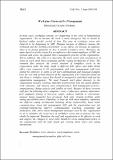| dc.description.abstract | In most cases, workplace stresses are happening in the work of humanitarian organization. This is because the work is more emergency that is should be finalized within specific period of time. The case of workplace stress also believed to be happening in NRC Ethiopia because of different reasons like workload and the working environment of the offices are located. In addition, there is no formal guideline on how to handle workplace stress. Therefore, the main objective of this research is to explore to what extent employees of NRC are stressed and assess the general stress management practice of the organization. And in addition, this study is to determine the main causes and consequences of stress at work, most stress symptoms and the coping mechanisms of stress. The research also analyses the overall situation of workplace stress in the organization under the study. Staffs in different field offices and Addis Ababa office were requested to fill questionnaire and some management staff were invited for interview in order to get more informational and practical examples from the real and current situation of the organization. The researcher found out that there is workplace stress that should be managed by individual staff and the organization management. The most frequent work place stressors in the organization includes workload, improper responsibility, role not clearly defined, work amenities, self interest, poor communication, bad management practice, organizational change policies and conflict in work. Because of these stressors staff face the following stress symptoms: worry, restlessness, anxiety, depression, poor judgment, feeling of insecurity, anger, sadness, inability to concentrate, memory losing, headache, loss of energy, back pain, sleeping problem, under eating and alcohol abuse. Therefore, to cope up with stress situation, employees use different coping mechanisms including taking responsibility, learn better communication, learn task management skills and the organization uses job redesign/restructuring, improve communication, coaching, counseling and medication. This shows stress management strategies used by this organization so as to minimize the occurrence of workplace stress and to prevent the case should be improved. Therefore, the staff and organization to be effective at work and support the refugees in need, there should be stress management policy in the organization and the staff should get training about stress and coping mechanisms. | en |


